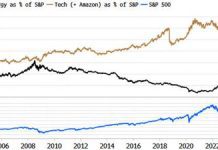While option trading relates to buying stocks, there’s a degree of difference essential to understand. Buying stocks involves researching a company, choosing whether or not to buy shares, how many shares to buy, hiring a broker to fill orders, etc. It takes similar steps to trade options; however, there are several more, including the significantly more complex process of opening an account. The difference between stocks and options is ownership: buying stocks grants the ownership of a small portion of a company. Options, on the other hand, are rights to buy or sell stocks at a fixed price on a particular date.
For those who want to know how to get started with trading options, start at the first set of hurdles to include initial capital required and finding a trustworthy broker.
Brokers will get to know each potential investor prior to giving them the green light for options trading. A broker will size up each candidate based on trading experience, risk tolerance, and financial readiness.
Be prepared for a potential broker to request the following prior to allowing options trading:
- information about the types of options you want to trade
- prior trading experience
- personal financial data (net worth, investments, etc.)
- your specific investment goals.
Following this interview, a broker will assign a trading level to the candidate; the levels typically range from 1 – 4 (a 5th level is commonly assigned as of late). This assignment determines types of trading options available to the investor.
Though the broker interviews you, you should also screen the broker and trust your gut when deciding if this relationship will support your goals. Choose a broker offering adequate guidance, data, and tools to assist the start of your process trading options.
Understand the two types of trading options: Calls and puts.
The purchase of a call option translates to owning the right, not the obligation, to buy a stock at the strike price (the cost of a specific derivative contract to be exercised) prior to the expiration of the option. A pull option, on the other hand, is the opposite: a contract providing the right, not the obligation, to sell a particular stock at a fixed price on a specified deadline.
A security which did not exist before is created whenever an option is sold; this process is otherwise known as writing an option. When one writes a call, the writer may become obligated to sell stocks at the strike price at any time prior to the expiration date. Otherwise, writing a put implies one is then obligated to buy shares at the fixed price before expiration.
Understand taking out an option essentially means purchasing a contract to, typically, buy or sell 100 shares of stock per contract.
Before you start trading options, three choices must be made:
1) Determine which direction the stock of interest will move (just as those trading stocks would likewise assess); 2) Estimate the trajectory in either direction from the current position; and 3) Predict the approximate time frame at which point the stock may move.
Starting with the first strategic decision of trading options, the answer to which direction a stock will move informs what kind of options contract an investor is able to accept. Logically, if one believes the price will rise, a call option will be purchased whereas a prediction of a drop in price would suggest a put option.
After choosing a call or put, one must consider just how high or low the stock will move. Trading options is only valuable if the stock price crosses the expiration date above or below the strike price relative to the option (above for call, below for put). Investors will try to buy an option with a strike price mirroring their predictions of the price within the option lifespan.
Hypothetically, if one believes the share price for a company’s stocks will rise from $130 to $150 by a certain day, a call option with a strike price below $150 (preferably minus the cost of the option) will be the most profitable. If events correspond to the predictions, the option is considered “in the money.” Likewise, the best put option for a price one believes will dip below $100 is a put option with a strike price above $100 (if possible, including the option cost). When the stock dives below the fixed price, again, this option is “in the money.”
As one learns how to get started trading options, it’s important to understand the trader is unable to simply choose a particular strike price.
Option quotes, otherwise known as option chains, come with a spectrum of strike prices. The price an investor pays for an option (also known as a premium) is comprised of two components: intrinsic value and time value.
In the event a stock price is higher than the strike price, the difference between those amounts relates the intrinsic value of the option. The aspect of time value when trading options is related to that which is leftover including the volatility of a particular stock. To illustrate, consider a $90 call option while the stock itself costs $100. If the option premium equals $15, the intrinsic value is $10 while the time value is $5.
Among the other predictions involved with trading options, an investor must consider the time frame during which a stock will move.
Everyone learning how to trade options evaluates what will happen with a particular stock prior to the expiration date listed with the option. The expiration date marks the last day one may exercise the option.
The time between options transactions and expiration dates could extend months or years. Shorter option times, those which expire after a day or a week, are typically risky and more often than not reserved for long-time veterans at trading options. Longer time frames between transactions and expiration provide more time for a stock to play out the investor’s predictions.
An option retains time value when there is a longer period between call or put options and the expiration date. Should the stock trade below the strike price, the time value still remains. On the other hand, the time value of an option deteriorates as the expiration date closes in. The option becomes worthless if the stock crosses the finish line below the strike price. The remaining time value on an option could still be sold, particularly with a longer option contract.












